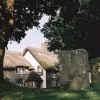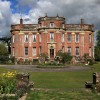As the Victorian era was drawing to a close the 20th century was taking its first breaths. The Horseless carriage, the motor car to you and me, was becoming less of a rich man’s novelty and more a viable form of transport. The penny-farthing had evolved into the safety bicycle, there was farm machinery to be kept working and industrial machines to be maintained; this was a good time to be a mechanical engineer.
Six decades earlier things had not been so good. For Charles Childs of Yetminster this meant moving to Deptford in Kent soon after his marriage in 1841 to Harriet King. Their son Charles was born there in 1847 followed by a daughter, Sarah Ann, in 1849. Later the couple moved to the Old Kent Road area, which was then a part of Surrey and where their son, Henry, was born in 1852.
When Charles Childs secured a job maintaining new machinery that had been installed at Willmott’s silk mills in Sherborne he was able to bring his family home. They lived in the Westbury area of the town and had three more children: Temperance in 1855, Albert in 1857 and Edwin in 1859.
The youngest boy, Edwin, inherited his father’s interest in all things mechanical and in his teens he was apprenticed to Joseph Read of Westbury. Read was a general smith, engineer and bell-hanger and through his works came many farm wagons, gigs and broughams (light, four-wheeled horse-drawn carriages) and there was plenty of business to had keeping primitive farm machinery running. Edwin was ideally suited for his placement with Joseph Read and this hands-on experience was supplemented by reading about his chosen trade in books and magazines.
The family was non-conformist. The children with their parents attended the Congregational Church. Edwin was a bell-ringer too, became captain of the Abbey Church bell-ringers and played a trumpet in the town band. In 1884 Edwin married Jane Bown in the Abbey Church at Sherborne and his eight children were all baptised there but he continued his allegiance to non-conformity. Edwin and Jane made a perfect match; she supported and encouraged his driving ambition to make something of himself and shared his enterprising spirit. They set up home in Hound Street, Sherborne and started to save for the future – no easy task on an income of thirty shillings a week.
In 1892 Edwin and Jane bought an ailing business, The Sherborne Coffee Tavern, for a deposit of £50 and a mortgage of £500 advanced by the Foresters Benefit Society. An odd choice of business for a mechanical engineer but it was a means to an end. At that point in their married life they had four children. Edwin continued to work for Joseph Read and had set up his own workshop and forge behind their cottage, where he carried out small jobs for his friends and kept up to date with his reading, while Jane served endless cups of coffee and innumerable trays of buns at the Tavern.
Two years on and Edwin was ready to launch his own business. The tea and coffee urns, counter, table and chairs went to make way for bicycles, bells, bags, lamps and oil. He commenced trading as a Cycle Agent selling Singers, Rovers, Ormonds, Swifts and Sunbeams. He hired out, repaired and cleaned bicycles and trikes and even taught customers how to ride. His timing was spot-on and after years of hard work he had his own business spurred on by a wave of bicycling enthusiasm that swept the country at the turn of the century.
1896 brought the first London to Brighton car rally and the first London Motor Show opened. Locally a Colonel Baxter who lived in Sherborne bought his first car, a Clement Panhard, and became Edwin Childs’ first automobile customer.
Motoring in those early days could be a hazardous experience. The heroic Colonel and his car would venture forth, but more often than not the car would stop and fail to restart somewhere along the planned journey and Edwin would be standing by to rescue the stranded Colonel and his car. Borrowing two strong horses from the Brewery and equipped with a strong rope he would tow the car back to his workshop and sort out the problem.
Bicycle sales increased but Edwin Childs was not a man to rest on his laurels. The windows of the Tavern were knocked out and double doors put in, large enough to facilitate entry of the very first tri-cars, the frames of which were mounted with a single cylinder four-stroke engine with a wicker-work passenger carriage fitted in front. The family’s first car was a tri-car with twin seats. On a Sunday morning, ignoring protests from an anxious mother, Edwin would drive his two youngest children the five miles to Yeovil and he prided himself always to have them back in time for Sunday lunch.
In 1903 the Motor Car Act was passed and came into force on the 1st of January 1904. This increased the speed limit to twenty miles-per-hour and required all drivers to have a licence then costing five shillings. Edwin Childs and his eighteen year-old son Charles were number thirty-nine and forty in the Dorset Licensing Register.
About this time Edwin purchased a plot of land in Long Street and on it he built a garage, the first in Sherborne. In the 1909 edition of the Handbook of the Motor Union of Great Britain he is listed as: “E.Childs. Repairer. Standing for twenty cars.” Not everyone who could afford one bought one but amongst his early customers were Colonel Baxter; E.A. Ffookes; R.T. Grantham; E.W. Bartlett, and Harry and Reggie Boden.
The car was not welcomed by everyone in Sherborne, for some saw the car as a danger to the town’s ancient heritage. The Church and School watched with distaste the innovation of the dust-raising mechanical carriage.
Edwin was convinced the car was here to stay and began to build a fleet of cars for hire. He already owned a pre-1900 Benz and added a 12 horse-power Vulcan, a 16 horse-power Argyle and a 22 horse-power Darraqu. The Darraqu was an open touring car with leather upholstery and canvas hood and windows, which, with the removal of the hood, could be winched into position by block and tackle. It was much in demand from the hunting fraternity for ferrying to and from various Point-to Point. The Darraqu could be converted into a car for all occasions. It was the ideal limousine for weddings and funerals and was also used for Hunt Balls that were held throughout the county during the hunting season.
Edwin Childs was a good husband, father and employer. He had spent his life working towards a personal ambition and with its fulfilment he found his leisure time and income increased and he now started to work towards his chosen good cause, the Yeatman Hospital; this, in the days when the Welfare State was still a dream of radicals. Eventually he was made a life governor of the Cottage Hospital. At the beginning of the First World War, he bought, maintained and provided a driver for an ambulance for the Red Cross to carry injured servicemen from the station to some local buildings and houses including Sherborne Castle, Leweston Manor and Chetnole Grange, that had been converted to receive them.
Edwin and Jane Childs had four sons and four daughters. One son served in France another in the Middle East and later the two younger sons were posted to army camps in different parts of the country. During the war there was still hire business to be had and because of the war effort more tractors had to be kept going, Petrol was rationed but people who had cars were using them in the service of their country, and these, too, had to be kept running. Approaching old age Edwin Childs found himself working as long and hard as he ever had at any time in his busy and eventful life. When the war ended the motor car was a fact of life. He died in 1934.
We have placed photographs pf Edwin Childs in the photo gallery.
FOOTNOTE: We have been contacted by Andrew Norwood who says about the Clement Panhard mentioned in the article: “ I am pleased to tell you that 110 plus years later the car is still going strong – although it is as temperamental as it was back in 1900. I own the car and you can find more about it at www.clementpanhard.com under ‘Our Car’ “ Mr Norwood has sent us a photo of the car and we have placed the image in the gallery.



